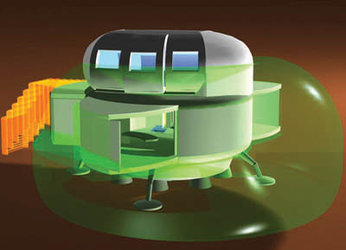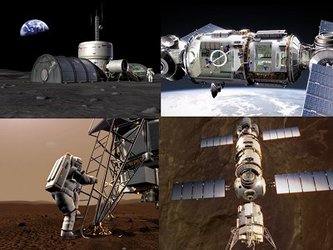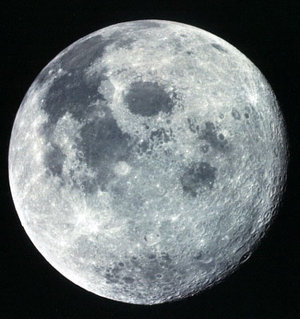Human mission to Mars: the second Aurora Working Meeting
While final preparations continue for the launch of ESA’s Mars Express – the Agency’s first mission to explore the Red Planet - European scientists and engineers are also looking towards the future, to a time when humans are able to set foot on the rust-red sands of our neighbouring world.
Preliminary planning for this giant leap in space exploration is well underway as part of ESA’s Aurora Programme, and some 60 members of industry, national space agencies and ESA came together on 14-15 May to receive a progress report on current activities and discuss the way forward.
During the first session, representatives of the four contractors (EADS, Alenia Spazio, Astrium and Alcatel) gave brief updates about their ongoing parametric analyses of a human mission to Mars, including studies undertaken by other agencies.*
By combining these companies’ expertise in space technologies with earlier human mission reference designs and other studies, it is expected that ESA will be able to identify the essential ‘trade-offs’ in mass, crew number, mission duration etc. for such an expedition, before beginning the first tentative studies of mission architecture.
“ESA is mediating and integrating the design effort, but the companies are doing independent studies and evaluations of the technologies for a human mission, based on their existing expertise,” said Loredana Bessone, ESA’s Human Mission Design Study/Manager.
“Obviously there are a number of major constraints that must be taken into account,” she said, “one of these is cost; the more mass we have to carry to orbit, the more costly the mission. Mission duration and crew size are important factors because they affect the consumables and power we need, but they also have an impact on the mass of the spacecraft.”

The second session included a presentation by astronaut Jean-Pierre Haigneré, a veteran of two spaceflights, about the importance of human spaceflight in the exploration of the solar system. This was followed by an animated discussion about the objectives of the first human mission to Mars.
“We are trying to get a clear idea of what will be required and what we can contribute to an international project to send humans to Mars,” said Franco Ongaro, head of the Aurora Programme.
“In order to do this, we must investigate how far Europe’s present day assets in human spaceflight can be advanced so that it can make important contributions to international exploration missions to the Moon and Mars in the decades to come.”
* Parametric studies There are 16 parametric studies related to the human Mars mission currently being undertaken by four industrial contractors. These are:
- the Martian logistic infrastructure (rovers, trucks, labs etc.)
- required resources needed by the crew (water, oxygen, food etc.)
- power for the Mars base
- crew environment (radiation, dust, microgravity)
- launchers
- assembly in orbit
- trajectories for journeys to and from Mars
- type of propulsion and power for the transfer
- strategy to arrive at Mars
- entry, descent and landing
- communications
- navigation
- ascent from Mars surface
- quarantine/Planetary protection
- Earth re-entry
- robotics and automation













